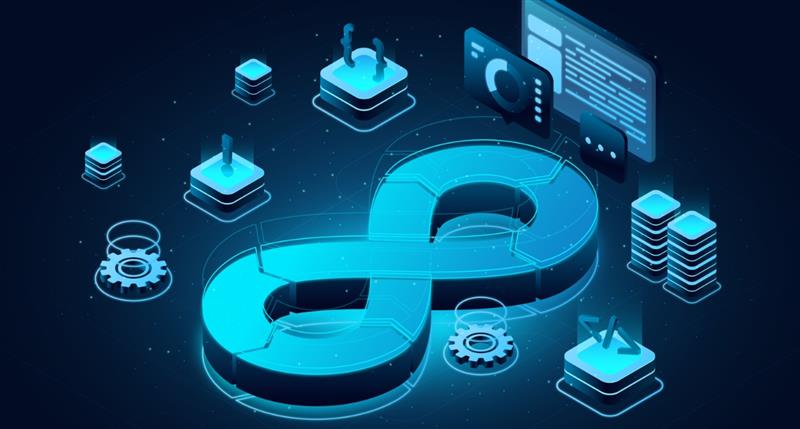Data pipelines are no longer back-office plumbing. They are strategic infrastructure, powering intelligent applications, real-time decisions, automation, and the AI systems enterprises now depend on. Over the last decade, the explosion of cloud-native systems, IoT data, AI workloads, and microservices has redefined what a “good” pipeline looks like. Today, the expectation is not just fast or reliable but scalable, elastic, observable, and future-proof.
However, many enterprises still struggle with brittle, batch-heavy, manually orchestrated pipelines inherited from legacy systems. These pipelines worked when data volumes were predictable. But the modern enterprise is different more distributed systems, more touchpoints, more data gravity, and far more integration complexity.
A Scalable Data Pipeline is the answer to this shift. Not as a buzzword but as an architectural necessity that impacts engineering velocity, governance, compliance, and business value generation.
Why Scalability Matters Now More Than Ever
The demands on enterprise data systems have changed drastically. A retail chain no longer just needs end-of-day reports, it needs real-time inventory sync, dynamic pricing updates, and fraud detection running on live streams. Healthcare providers no longer need monthly analytics; they need patient data interoperability, automated compliance checks, and AI-supported decision systems.
A scalable pipeline ensures that as your data volume grows, your performance doesn’t shrink. Instead of adding more manual workflows or fragile scripts, scalability lets your systems expand automatically through horizontal compute, distributed storage, and modular components.
According to McKinsey, enterprises that modernize their data architecture see 2–3× faster time-to-insight and significant cost reduction in downstream analytics workloads (McKinsey, “Data Architecture Modernization Report”, 2023). Scalability isn’t just technical hygiene; it directly shapes business agility.
From Legacy Pipelines to Modern Data Engines
Traditional ETL workflows were built on rigid scheduling and batch-based data movement. They broke easily, took weeks to modify, and required excessive maintenance. Modern pipelines, by contrast, are event-driven, cloud-native, and API-first, enabling distributed teams to build and deploy with speed.
A scalable pipeline typically involves several architectural pillars:
Modular Ingestion Layer
In modern systems, data doesn’t come from one source, it comes from dozens. APIs, databases, cloud apps, sensors, user activity logs, device telemetry, CRM systems… the pipeline must support ingestion at flexible frequencies and at varying load scales.
Distributed Storage Layer
Data lakes, warehouses, and lakehouses now function as the backbone of analytics and AI training. A scalable pipeline ensures that the storage layer expands independently without creating bottlenecks or exponential cost spikes.
Stream Processing Engine
Real-time processing is becoming standard, not premium. Event streaming technologies like Kafka or Kinesis enable low-latency insights, anomaly detection, recommendation systems, and automated triggers.
Orchestration & Automation Layer
Instead of cron jobs, modern orchestration uses tools like Airflow, Dagster, or Prefect to manage dependencies, retry logic, and lineage. A scalable pipeline coordinates thousands of tasks without human intervention.
Observability & Monitoring
Scalability fails without visibility. Logs, metrics, lineage, and alerting systems ensure engineers know when and why things break. The best pipelines fail quickly, recover rapidly, and surface issues promptly.
Gartner’s 2024 Data Trends Report notes that data observability is now among the top 3 priorities for enterprises adopting AI-driven systems, because scalable systems require deep visibility to remain stable.
 The Real Pain Points Enterprises Face
The Real Pain Points Enterprises Face
Most enterprises don’t struggle because they lack data. They struggle because their pipelines cannot keep up.
Engineering teams typically face challenges like:
- Data silos across departments
- Latency issues involving multiple distributed systems
- Unreliable batch processes that break under load
- High operational cost due to inefficient compute usage
- Poor data quality due to a lack of governance
- Difficulty integrating legacy systems with cloud-native workloads
These challenges compound into delays, delayed dashboards, delayed decisions, delayed product releases, and delayed customer experiences.
Scalable pipelines remove these friction points by making the system independent of volume spikes, new integrations, new analytics workloads, and AI pipelines.
How Kansoft Builds Scalable Data Pipelines (Our Engineering Approach)
At Kansoft, we design pipelines for enterprises that must scale not someday, but from the very beginning. Our architecture focuses on elasticity, fault tolerance, cloud efficiency, and minimal manual intervention.
We build pipelines using:
- Cloud-native ingestion and serverless components to reduce operational overhead
- Modular orchestration frameworks that allow rapid extensions
- Multi-layered storage strategy (hot, warm, cold storage) to optimize cost
- Event-driven architecture for real-time systems
- Data governance and lineage as built-in features
- Monitoring systems that surface anomalies before they become failures
This approach ensures enterprises can add data sources, expand regions, onboard new applications, or support new AI workloads without re-engineering the core pipeline.
Our pipelines are already powering healthcare providers, fintech companies, supply chain platforms, and GCC transformation programs, helping them move from fragmented operations to automated intelligence.
Why This Matters for Your Enterprise
A scalable data pipeline is not simply a technical upgrade. It is the foundation that will support:
- future AI and ML initiatives
- automation across departments
- reduction in engineering maintenance
- elimination of data duplication and errors
- real-time decision systems
- regulatory compliance and audit trails
Whether you are aiming to modernize a legacy stack, integrate with cloud services, or build an AI-first organization, scalability is the difference between a pipeline that supports growth and one that collapses under it.
Where You Go From Here: Building for the Next Decade of Data
Building a scalable data pipeline isn’t just about engineering elegance; it’s about preparing your organization for a future where data grows faster than your capacity to process it. The companies that lead the next decade won’t be the ones with the flashiest dashboards, but the ones with data foundations strong enough to support real-time decisions, advanced analytics, and AI-driven products without breaking under pressure. A scalable pipeline doesn’t just improve performance; it creates a quiet, reliable engine behind every system, every workflow, and every strategic move you make.
And this is exactly where Kansoft creates impact. With years of experience building resilient, cloud-native data architectures for enterprises across domains, Kansoft helps organizations move beyond patchwork fixes and design pipelines that are intentionally engineered for growth. We understand the realities of scaling, the ingestion bottlenecks, orchestration challenges, governance gaps, and the architectural decisions that make or break long-term reliability. Our approach combines practical engineering with forward-looking design, ensuring your pipeline performs just as smoothly at 10x or 100x volume.
In a world where data moves faster than ever, a scalable pipeline is no longer optional; it’s foundational to innovation. The organizations that invest in this today will be the ones leading their industries tomorrow. If you’re ready to build that kind of future, Kansoft is ready to help you architect it.



